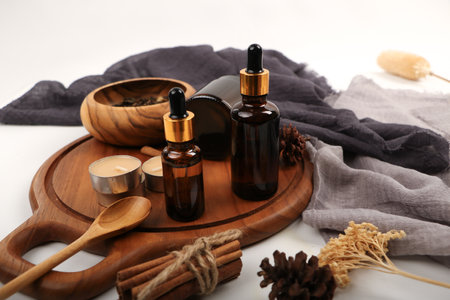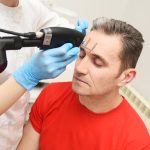1. Hydrating Agents
After a skincare treatment—whether its a chemical peel, laser session, or microneedling—your skin often feels drier and more sensitive than usual. This is completely normal, but it also means your post-treatment routine needs to focus on deep hydration and barrier repair. Choosing the right hydrating ingredients can make all the difference in how quickly and comfortably your skin recovers.
Why Hydration Matters
Treatments that resurface or exfoliate the skin can temporarily disrupt its natural moisture barrier. Without proper hydration, your skin may feel tight, flaky, or irritated. That’s why using products packed with effective hydrating agents is key to helping your skin bounce back faster.
Top Hydrating Ingredients to Look For
Here are some of the most dermatologist-recommended ingredients for post-treatment hydration:
| Ingredient | How It Helps Your Skin |
|---|---|
| Hyaluronic Acid | Draws moisture into the skin, keeping it plump and hydrated without clogging pores. |
| Glycerin | A gentle humectant that attracts water to the skin and helps maintain softness. |
| Ceramides | Strengthen the skins natural barrier, locking in moisture and protecting against irritants. |
Tips for Using Hydrating Products Post-Treatment
- Keep it simple: Avoid products with heavy fragrances or active ingredients like retinol or AHAs right after treatment.
- Apply while damp: After cleansing, apply hydrating serums or creams while your skin is still slightly moist to lock in extra hydration.
- Layer correctly: Start with lighter serums (like hyaluronic acid), then seal them in with thicker creams containing ceramides.
Choosing products with these essential hydrating agents can help soothe irritation, speed up recovery time, and leave your skin feeling soft, smooth, and comfortable after any professional skincare treatment.
2. Soothing and Calming Ingredients
After aesthetic treatments like laser therapy, chemical peels, or microneedling, your skin is often left red, sensitive, and irritated. That’s why it’s crucial to choose skincare products that contain ingredients known for their soothing and calming properties. These ingredients can help reduce inflammation, speed up recovery, and make your post-treatment experience much more comfortable.
Top Soothing Ingredients to Look For
Here are some key ingredients to keep an eye out for when shopping for post-treatment skincare:
| Ingredient | Benefits |
|---|---|
| Aloe Vera | Hydrates the skin while reducing redness and inflammation. Its cooling effect offers instant relief. |
| Chamomile Extract | Rich in antioxidants and anti-inflammatory properties, chamomile helps calm irritated skin and speeds up healing. |
| Centella Asiatica (Cica) | Known for boosting collagen production and tissue repair, its a go-to ingredient for calming stressed or damaged skin. |
Why These Ingredients Matter
Your skin barrier is temporarily compromised after treatments, making it more vulnerable to external irritants. Soothing ingredients not only calm visible signs of irritation but also support the natural healing process. Using the right products can make a noticeable difference in how quickly your skin recovers and how comfortable you feel during the healing phase.
Quick Tip:
Look for fragrance-free and alcohol-free formulas with these ingredients to minimize further irritation.

3. Antioxidants for Protection
After any skincare treatment—whether its a chemical peel, microneedling, or laser therapy—your skin is more vulnerable to environmental stressors. One of the most important ways to protect and nourish healing skin is by using products rich in antioxidants. These powerhouse ingredients help fight free radical damage, support skin repair, and boost your skin’s overall recovery process.
What Are Antioxidants and Why Do They Matter?
Antioxidants are molecules that neutralize free radicals—unstable atoms caused by things like pollution, UV rays, and even stress. Free radicals can cause premature aging, inflammation, and interfere with the healing process. Including antioxidant-rich products in your post-treatment routine helps shield your skin from further damage while promoting faster recovery.
Top Antioxidants to Look For
Here are some of the most effective antioxidants commonly used in post-treatment skincare:
| Antioxidant | Benefits | Common Sources |
|---|---|---|
| Vitamin C | Brightens skin, boosts collagen production, and protects against environmental damage | Serums, creams, ampoules |
| Vitamin E | Soothes irritation, moisturizes deeply, and enhances the effect of other antioxidants | Oils, moisturizers, healing balms |
| Green Tea Extract | Reduces redness and inflammation while calming sensitive skin | Toners, masks, serums |
How to Incorporate Antioxidants Into Your Routine
You don’t need a complex regimen to get the benefits of antioxidants. Look for lightweight serums or moisturizers that contain these ingredients and apply them after cleansing but before heavier creams or sunscreens. Be sure to patch test new products first, especially after treatments when your skin may be more reactive.
Pro Tip:
If you’re layering multiple products, apply water-based formulas like vitamin C serums first, followed by oil-based ones like vitamin E creams. This ensures better absorption and effectiveness.
4. Gentle Exfoliating Ingredients
After aesthetic treatments like chemical peels, laser therapy, or microneedling, your skin is often more sensitive than usual. While exfoliation can help remove dead skin cells and support healthy cell turnover, it’s important to use ingredients that are gentle and non-irritating during the recovery phase.
Why Gentle Exfoliation Matters
Harsh scrubs or strong acids can disrupt the healing process and lead to irritation, redness, or even damage. Instead, opt for mild exfoliants that work effectively without being abrasive. These ingredients help maintain smoother texture and brighter skin while respecting your skin’s healing barrier.
Recommended Gentle Exfoliating Ingredients
| Ingredient | Type | Benefits |
|---|---|---|
| Polyhydroxy Acids (PHAs) | Chemical exfoliant | Gently remove dead skin cells, hydrate, and offer antioxidant protection; ideal for sensitive or post-treatment skin |
| Enzyme-based exfoliants (e.g., papain, bromelain) | Natural enzymatic exfoliant | Dissolve surface debris without mechanical action; suitable for fragile or sensitized skin |
| Lactic Acid (in low concentrations) | AHA (Alpha Hydroxy Acid) | Mildly exfoliates while boosting hydration; appropriate for dry or compromised skin when used in low strengths |
Tips for Using Exfoliants Post-Treatment
- Wait until the skin has calmed: Always follow your provider’s timeline before introducing any exfoliant after treatment.
- Patch test first: Even gentle ingredients can react differently depending on your skin type and condition.
- Avoid overuse: Limit exfoliating to 1-2 times per week unless directed otherwise by a skincare professional.
- Follow with moisture and SPF: After exfoliating, apply a hydrating moisturizer and always protect your skin with sunscreen during the day.
By choosing the right kind of gentle exfoliants, you can support your post-treatment recovery while maintaining healthy, glowing skin without causing unnecessary irritation.
5. Sun Protection
After any skin treatment—whether it’s a chemical peel, laser procedure, or microneedling—your skin becomes more sensitive to sunlight. That’s why sunscreen is non-negotiable during the recovery phase. Without proper sun protection, you risk hyperpigmentation, delayed healing, and even damage to your newly treated skin.
Choose Broad-Spectrum SPF
When selecting a post-treatment sunscreen, make sure its labeled “broad-spectrum.” This means it protects against both UVA and UVB rays. You’ll want an SPF of at least 30, though SPF 50 is often recommended for added security in those first few days after treatment.
Go for Physical (Mineral) Sunscreens
Chemical sunscreens can sometimes irritate freshly treated skin. That’s why dermatologists often recommend physical blockers like zinc oxide and titanium dioxide. These ingredients sit on top of the skin and reflect UV rays instead of absorbing them, making them gentler and safer for sensitive post-procedure skin.
Comparison: Physical vs. Chemical Sunscreens
| Sunscreen Type | Main Ingredients | How It Works | Best For Post-Treatment? |
|---|---|---|---|
| Physical (Mineral) | Zinc Oxide, Titanium Dioxide | Reflects UV rays | ✅ Yes |
| Chemical | Avobenzone, Oxybenzone, Octinoxate | Absorbs UV rays and converts to heat | ❌ Not ideal |
Application Tips
- Apply sunscreen every morning—even if youre staying indoors.
- Reapply every two hours if you’re outside or near windows with sunlight exposure.
- Use a generous amount—about a nickel-sized dollop for your face alone.
- Don’t forget areas like your neck, ears, and hands.
Your skin is working hard to heal after treatment. Give it the protection it needs with the right kind of sunscreen—it’s one of the most important steps in keeping your results looking great and your skin healthy long-term.


